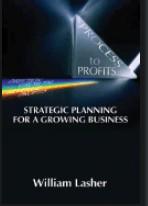Question
Required information Andy, Jim and Dwight are starting a professional paper shredding company, and they are still exploring the pros and cons of the following
Required information
Andy, Jim and Dwight are starting a professional paper shredding company, and they are still exploring the pros and cons of the following types of legal entities:
C-corporation
Limited partnership
S-corporation
Andy and Jim will each contribute $200,000 in cash in exchange for their ownership interest. Dwight will contribute a warehouse that he owns that will be used to house the shredder machines. The warehouse has an FMV of $290,000 and is encumbered by a $90,000 mortgage. Dwight purchased the warehouse 3 years ago for $180,000. It was agreed that the profit and loss from the company's operations will be divided equally (i.e. 1/3 each) amongst the three owners.
Andy will manage the company's operations in exchange for $75,000 in compensation per year. Jim and Dwight will have minimal involvement in the company's operations, as they also own and manage full-time a company they formed as an LLC that sells pickled beets.
In addition to the $90,000 mortgage on the warehouse that is considered qualified nonrecourse financing, the company will also have a $180,000 recourse loan with a local bank and $75,000 in nonrecourse accounts payable. Jim and Dwight will not be included as guarantors for the recourse loan.
Assume instead that Andy, Jim and Dwight decided to form an S-corporation. In its first year of operations, the S-corporation generated ordinary income of $270,000 and made a cash distribution of $108,000 to the shareholders.
The ordinary income allocated to the shareholders is considered qualified business income; therefore, the shareholders are allowed to deduct 20% of their allocable share of ordinary income on their Form 1040.
(Important Note: The ordinary income allocated to Jim and Dwight is considered passive activity income that is subject to the net investment income tax. The qualified business income deduction cannot reduce their passive activity income for purposes of computing the net investment income tax only).
What would the overall effective tax rate be (corporate + individual tax impact) on the $270,000 taxable income earned in the first year? Do not include the impact on Andy's tax liability for his compensation received from the corporation.
Applicable tax rates:
Corporate - 21%
Individual - ordinary income - 37%
Individual - qualified dividend income - 20%
Individual - net investment income - 3.8%
Multiple Choice
32.64%
30.52%
32.13%
29.60%
Step by Step Solution
There are 3 Steps involved in it
Step: 1

Get Instant Access to Expert-Tailored Solutions
See step-by-step solutions with expert insights and AI powered tools for academic success
Step: 2

Step: 3

Ace Your Homework with AI
Get the answers you need in no time with our AI-driven, step-by-step assistance
Get Started


